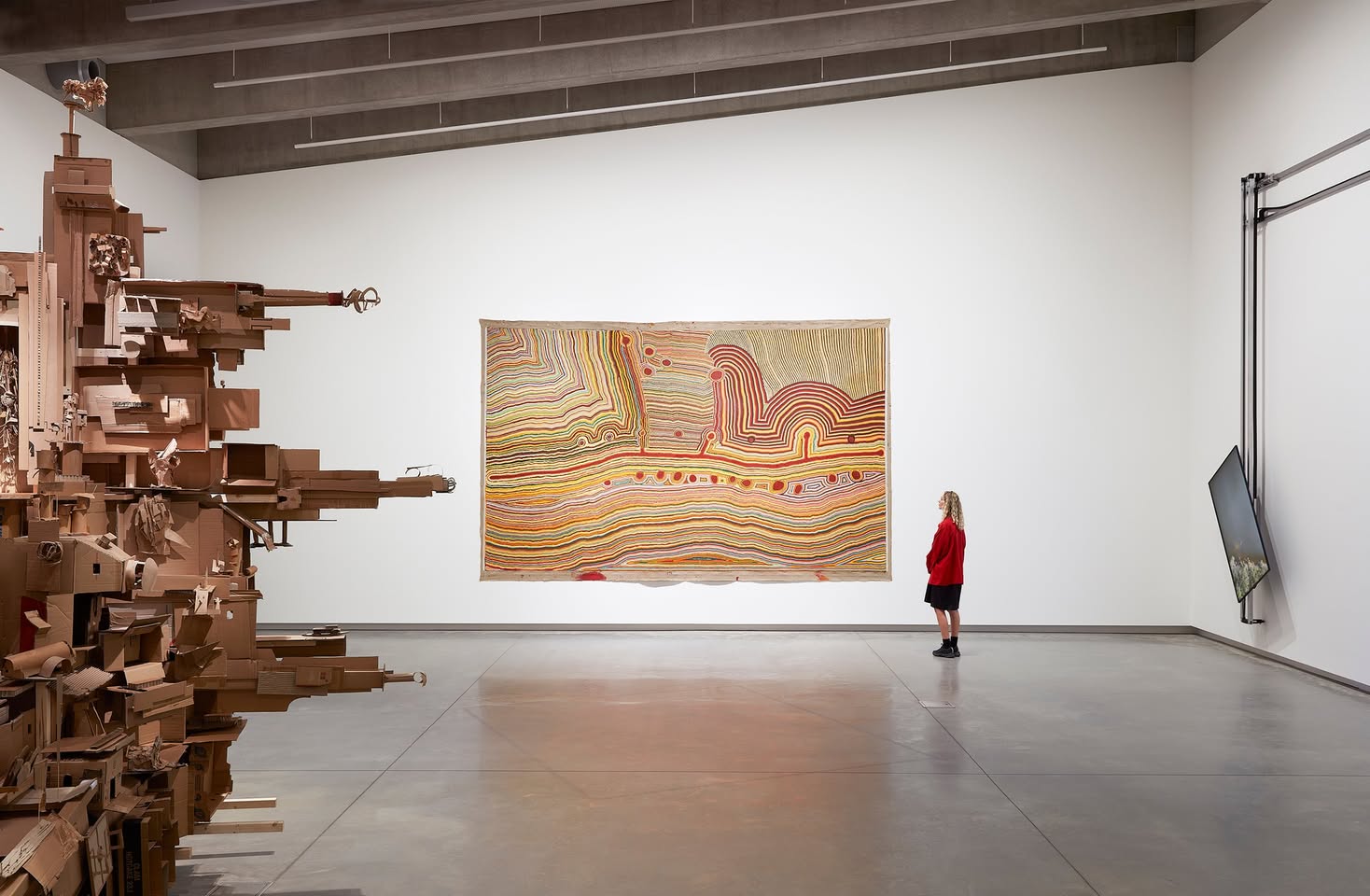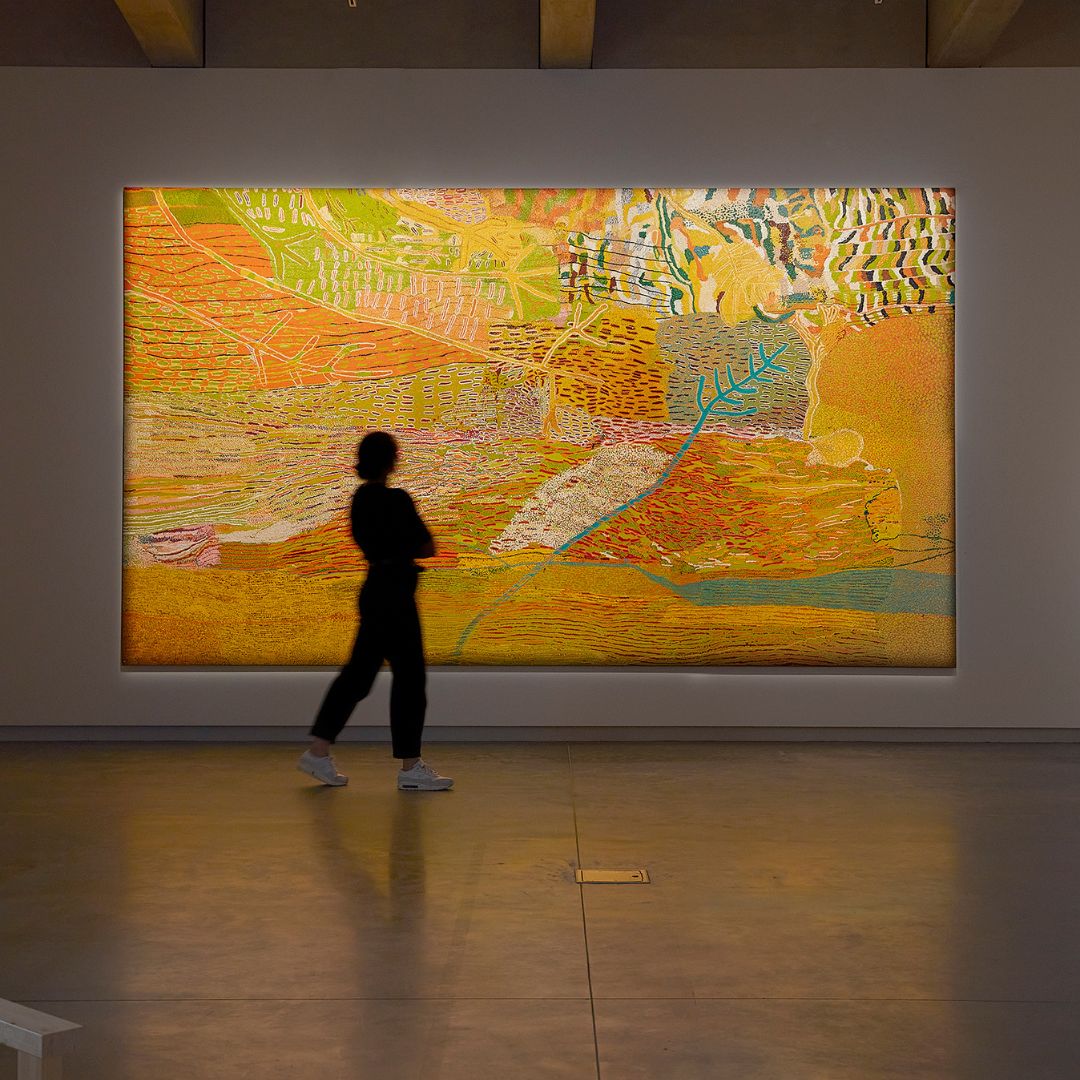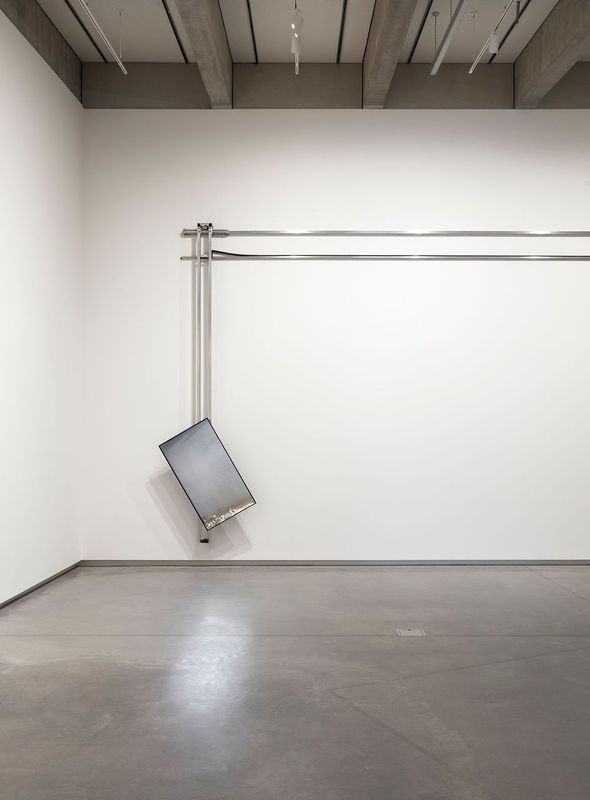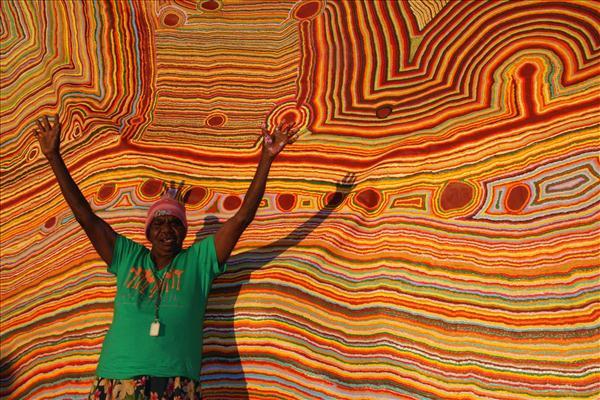
Ngamaru Bidu, J. Biljabu (deceased), Ngarga Thelma Dundan Judson, J. Girgirba (deceased), Kumpaya Girgirba, Ngalangka Nola Taylor, Martumili Ngurra (This is all Martu’s Home), 2009. Image courtesy of Bundanon, 2025.
Thinking together: Exchanges with the natural world presents major new commissions by contemporary artists Robert Andrew, Alfredo and Isabel Aquilizan and Keg de Souza, alongside paintings by the Martu communities of central Western Australia, and video works by Sorawit Sangsataya and Tina Stefanou.
The exhibition explores themes of reciprocity and collaboration between the human and non-human. Each work responds to notions of community, and considers the possibility that new knowledge can only be created through a process of thinking together, via communal making, cooperation between the species and embodying First Nations practices of knowledge sharing. A central pillar of this approach is presented in the large scale collaborative paintings of the Martu communities of central Western Australia, reflecting long histories of creating together that strengthens culture and grounds knowledge in place. These works reflect a complex web of relationships, linking environmental and ritual knowledge, geographic information and ancestral stories, whilst also building strong connections between the artists who come together to paint.
Robert Andrew
new eyes — old Country is a meditative work that captures the contours and pathways of Bangli / the Shoalhaven River. Using drone footage captured whilst in residence at Bundanon, Robert Andrew translates the course of the river into a cumulative wall drawing made from materials sourced from the Bundanon landscape. Slowly building over time, this durational drawing will gradually gain intensity, reflecting the incremental ways in which knowledge of Country is gathered and understood.
Robert Andrew, a descendant of the Yawuru people, creates kinetic installations that bring together programmable machinery with natural materials found on Country. Working site-specifically, these complex installations explore the spiritual, cultural, and historical connections between land, waters, sky, and living things. The artist describes this work as an act of storytelling without words, reclaiming culture that has been hidden or lost through translation.
The exhibition features two collaborated artworks by Martumili Artists.
Martumili Ngurra (This is all Martu’s Home) presents the Martu peoples’ homelands, including the Great Sandy and Gibson Deserts. The six artists who collaborated on the work all live or have strong family associations with the remote community of Parnngurr, located 370 kms east of Newman in Western Australia. The painting includes sacred sites, waterholes, and pathways that are integral to Martu life, whilst also recording the impacts of mining and modern pastoralism.
Artists from the Martu communities in Western Australia are renowned for their collaborative works, reflecting their deep knowledge of the land and ancestral stories. These impressive paintings serve an important role in the education of younger generations, ensuring culture is preserved. They depict the desert landscape in intricate detail, mapping significant cultural, social, and ecological sites, as well as sharing geographic information and instructions on caring for Country. These works are the result of collective processes where older and younger artists come together to paint, share stories and sing, passing down Martu knowledge to future generations.

Ngamaru Bidu, J. Biljabu (deceased), Bowja Gaye Patricia Butt, Kumpaya Girgirba, Noelene Girgirba (Lanky) Oates, Muuki Taylor, N. Taylor (deceased), Ngalangka Nola Taylor, W. Taylor (deceased), Kalyu, 2014. Image courtesy of Bundanon, 2025.
Kalyu was painted as a protest against uranium mining exploration near Karlamilyi National Park in Western Australia. It depicts a fragile ecosystem with vital underground water systems, illustrating the interdependence of each of the elements and reflecting a deep cultural and ecological connection to Country. Kalyu is a powerful statement for the preservation of the desert environment. The painting documents the landscape from below the ground up to the surface of the earth.
[We] painted to save it from the uranium mine…and to tell them there is an underground stream…There’s no water on the surface to keep the dust down. That’s why we painted this big painting, to tell them and to teach others about the water system in our land. —Ngalangka Nola Taylor, 2014

